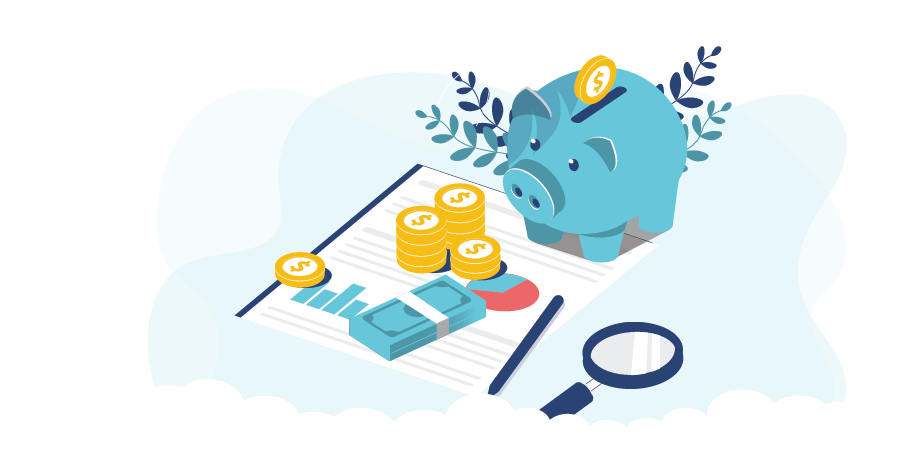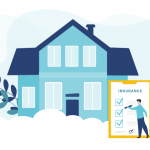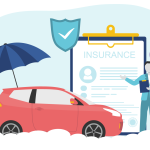12 MORE Ways to Save on Auto Insurance
October 9, 2020
You asked for it, so we’re back with 12 MORE ways to save on Auto Insurance! In case you missed our first piece on 12 practical ways to drive down your auto rates, click here.
Sometimes the trick to a cheaper rate is as simple as driving safer, driving better, or even just driving less. But it can be hard to save, especially if you’re a young or new driver with a traffic ticket already on file.
That’s why we’ve compiled a list of some of the less obvious ways you can save on your auto premium. Whether you already have insurance or you’re on the market for a new policy, these simple tips will reduce your bottom line without compromising on coverage.

1. Don’t make costly modifications to your car.
Don’t get us wrong, it’s important to maintain your car’s regular upkeep. But try to avoid adding costly vehicle modifications unless they’re absolutely necessary.
In the eyes of your insurer, any alteration you make to your car to improve its performance, functionationality, or looks—any change that differs from the manufacturer’s original specification—will increase its replacement value, repair costs, and risk profile, and with it, your premium.
That includes anything from engine enhancements to bodywork to aesthetic or interior modifications like a new paint job, seat replacements, or an upgraded sound system. Even adding a simple racing stripe to the hood of your car can add to the cost of your insurance.
Why? It’s simple: the faster and more powerful your car, the greater the chance of an accident. And the flashier it is, the likelier it is to be stolen.
PRO Tip:
Consider the insurance repercussions before making any changes to your car. Inform your provider of any modifications you plan to make well ahead of time so you’re fully aware of how they’ll affect your premium. Failing to declare modifications might leave you underinsured in the event of a claim.
2. Avoid small claims.
If you can comfortably afford it, try to cover the repairs yourself for any single-car accident that involves less than $1,000 of damage (i.e. if you backed into a poke and scratched a little paint off). Many insurance companies treat all at-fault claims the same regardless of the amount paid out. That means a $600 fender bender might have the same impact on your insurance as a $50,000 accident. And no matter what, it’ll still affect your auto pricing for years even if you have an otherwise pristine driving record.
To be clear: you should always report an accident if a third-party was involved or if a reasonable level of damage has occurred. Never attempt to negotiate an out-of-pocket settlement with another driver without calling your insurer. We get it—no one wants their rates to jump up because of a collision. But an under-the-table agreement could easily backfire on you if the other driver sues you anyway.
PRO Tip:
Be strategic when filing for small claims. Assess your options (with your deductible in mind) and determine whether it makes sense to file a claim and risk a premium hike.
3. Build up your driving history.
This is a key tip for younger drivers. Insurance prices are notoriously expensive for young drivers between the ages of 16 and 25 because collisions involving them tend to be much more frequent and serious.
The longer and more stable your driving record is, the greater your chances are of getting cheaper auto insurance. A motorist who’s 35 years old with nearly 20 years of solid driving experience, barring any major convictions, will generally have a lower rate than a 20-year-old with fewer than 5 years behind the wheel.
PRO Tip:
Young drivers can build experience as a “named”, “secondary”, or “occasional” driver under a parent or guardian’s policy, rather than as the principal driver of their own vehicle. Being listed as a secondary driver still counts as years of experience that will benefit you in the future when you get your own policy.
4. Cash in on multiple cars and/or drivers.
Insurance companies are willing to offer a bulk rate if it means you’ll bring in more business for them. That’s why a quote for a single vehicle will cost you more than if you inquire about multiple cars or drivers.
PRO Tip:
If you live in a multi-vehicle or driver household, consider insuring all of your vehicles with a single provider—you’ll save a percentage for each car added.
One small catch: all drivers must live at the same residence and/or be related by blood or marriage. However, two unrelated people can still secure a discount if they co-own a vehicle together.
5. Be choosy about secondary drivers.
It’s important to remember that the occasional or secondary drivers on your policy will influence your premium. So while it might benefit a young driver to be added to your policy, you might be penalized with a higher rate if they’re new, inexperienced, or just plain reckless.
PRO Tip:
Be careful with who you add to your policy. If your child or partner falls into a high-risk category, ask if you can exclude them from your coverages.
Additionally, be selective with who you allow to borrow your vehicle…because you’re also allowing them to borrow your insurance. And if a borrower has an at-fault accident in your car—even if you’re not involved—you’ll be the one paying for it when it comes to your premium.
6. Get educated.
It’s no secret that new drivers face some of the steepest premiums. But you can offset those costs by enrolling in certified driver’s education. In Ontario, Ministry of Transportation-approved training can qualify new drivers for up to 10% in savings alone.
Whether you’re a beginner or a seasoned pro, it’s not a bad idea to reassure insurance companies that you’re low-risk by taking a defensive driving or accident prevention course. In fact, driver’s ed might even help you reduce the number of demerit points on your license if you already have a speeding ticket or another minor violation.
Courses will cost you, but you’ll be safer on the road and you’ll save on your premiums too. You can find a list of accredited programs on your province’s transportation ministry website.
PRO Tip:
Double check with your provider before signing up if a discount is your primary motive for signing up just in case the expense outweighs your savings potential.
7. Scrap extra coverages.
For Auto Insurance, sometimes less is more. In addition to mandatory liability coverage, many drivers also buy collision and comprehensive insurance for repairs from accidents, theft, or vandalism.
But depending on how old your car is, where you live, and what your driving habits are like, you might not need a fully-loaded policy. And if your car is old or on its last legs, if it’s worth:
-
The same or less than your deductible;
-
Less than 10 times your premium plus your deductible;
-
Less than it would cost to repair;
…it’s probably not worth it to pay for extra coverage. Mandatory insurance is enough to cover damage or injury to others and cutting the excess could substantially trim down your premium. In fact, you could probably even put those savings towards purchasing another vehicle. Just keep in mind that you’ll have to cover the expenses out-of-pocket if your car is totalled.
PRO Tip:
Weigh the cost of collision and comprehensive coverage with the value of your car, which might be drastically reduced by its age, mileage, and condition.
Don’t make any hasty decisions though. Remember, insurance isn’t just there to protect your car or your finances; it’s there to protect your peace of mind. And if you feel safer with collision coverage “just in case,” stick with what feels comfortable for you. Talk it over with your broker to make sure you have the right amount of protection for your needs.
8. Adjust coverage for seasonal vehicles.
Some vehicles aren’t meant for all four seasons. Drive a motorcycle, classic car, or any other kind of recreational vehicle? Well then you’ll have to put it away for the winter. And if your car is collecting dust in storage for the better part of the year, why bother paying a full premium?
Don’t cancel your policy just yet through. Cancellation means your car will be completely unprotected during its time off the road. If it’s destroyed in a garage fire, stolen, or damaged by a storm, you’ll be on the hook for the loss. And if it’s nicked during an emergency drive, you won’t just have to cover the repairs yourself, you might be fined thousands of dollars for driving without insurance.
Plus, there’s always a possibility you’ll see a premium increase when you start driving again in the spring and get a new policy. Say you had an accident the previous year. If your provider decided to forgive it before you cancelled with them, you’ll be back to square one with an expensive rate when you apply for a new policy as a high-risk driver.
PRO Tip:
Rather than cancelling your insurance altogether, modify your existing policy for off-season vehicles and forego unnecessary coverages for a cheaper rate. Consider:
-
Reducing liability and accident benefit coverage to minimum levels;
-
Dropping collision coverage since your vehicle isn’t being driven (but hold onto comprehensive coverage in case of storms, fires, or theft);
-
Revise your annual mileage expectations;
-
Remove secondary drivers, optional coverages, and endorsements;
-
Raising deductibles to the highest level;
With the bare minimum protections in place, your car is clear for emergency use if you really need it.
9. Avoid gaps in your insurance history.
Since we’re on the topic of cancellation, try to avoid gaps in your insurance history. Tickets and accidents take at least 3 years to fall off your record and it’ll be harder to bounce back if you cancelled your policy shortly after your last infraction.
PRO Tip:
Even if you’re driving less or don’t have a car for awhile, see if you can get added to a family member’s policy to keep your insurance history uninterrupted for as long as possible. The more you drive, the lower your insurance.
10. Park safe.
Where you park can put you at greater risk of car theft or damage, particularly if your area is prone to collisions, break-ins, or other crime. Even if your car is safe from slashed tires and broken windows, the risk factor of your area will be reflected in your insurance price.
PRO Tip:
Parking your vehicle in a private driveway, garage, or carport, instead of a dim street or a public lot could get you a discount. If you don’t have access to private parking, consider renting an extra space from a neighbour or finding a secure overnight spot, like an underground lot.
11. Install a dash cam.
While simply owning a dash cam won’t decrease your rates, the footage recorded could be invaluable in certain situations. What if another driver hits your car and tries to claim that you’re at fault? Or what if your vehicle was stolen and targeted as part of an insurance fraud ring? A dash cam can help prove your innocence and prevent your premium from shooting up if you’re falsely accused.
12. Just ask.
Insurance companies give credits for a variety of reasons. Some you might expect—driving responsibly, low mileage, no accidents—others, however, might surprise you, like discounts for: loyal clients, retirees, seniors, mature drivers over 50, military personnel, going paperless, bundling Home & Auto Insurance, having winter tires, paying your annual premium all at once, or even being a good student.
Some insurers also discount drivers who obtain insurance through a professional, business, or alumni group, post-secondary institutions, or other association. In fact, PROLINK offers up to 20% off standard market rates for Home & Auto Insurance through membership with a professional association or affinity group. Check our associations page here to see if you’re eligible.
PRO Tip:
The trick to most discounts? It’s as simple as asking your broker. Credits vary by provider, but nearly all carriers offer them so don’t be shy about asking if you think you qualify. You never know where you might be able to save.
It might take some time, but following the tips above will definitely steer you towards a cheaper rate. If you do all of these things and your premiums don’t budge, it might be time to talk to your broker about a change.
Remember, no two companies measure risk in the same way; you might be high-risk with one carrier and a medium-risk with another. And working with a broker—like PROLINK—can make all the difference where it matters most. We’ll take the time to listen, advocate for you, and deliver a solution that fits your needs, your lifestyle, and your budget.
To learn more, connect with PROLINK today!
PROLINK’s blog posts are general in nature. They do not take into account your personal objectives or financial situation and are not a substitute for professional advice. The specific terms of your policy will always apply. We bear no responsibility for the accuracy, legality, or timeliness of any external content.




